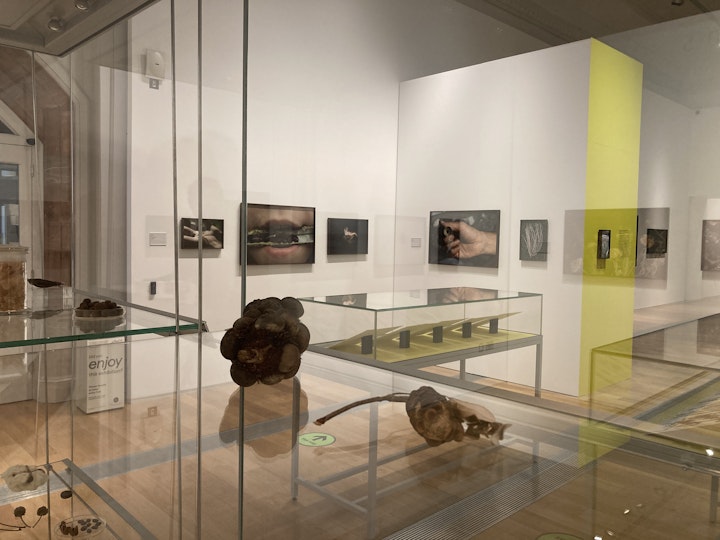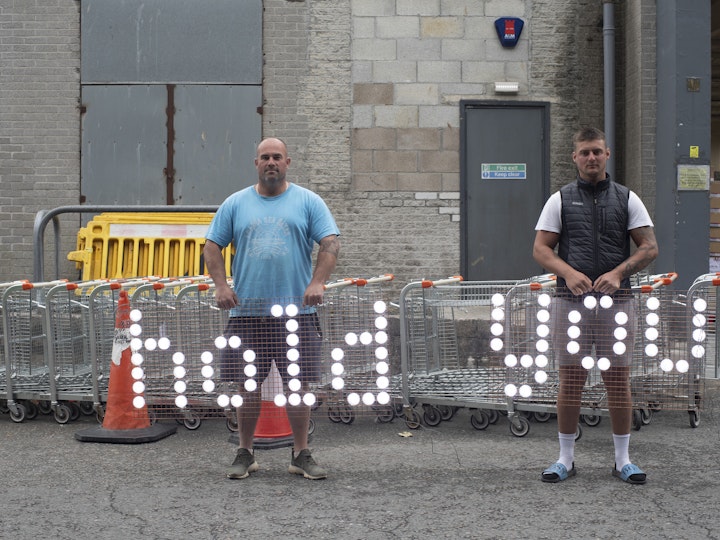In the Shadow of Things by Christian Caujolle.
Léonie Hampton – In the Shadow of Things.
Written by Christian Caujolle.
Published in Ojo de Pez in March 2009
Christian Caujolle studies under Michel Foucault, Roland Barthes and Pierre Bourdieu in Paris. During the 80s he was photography editor for ‘Liberation’, a time when the newspaper was acclaimed for its bold use of photography and design. He then went on to found the French photography agency Agence VU, which he continues to run as an artistic director. He is an internationally respected writer and critic on photography.
In the course of the last ten years we have witnessed a proliferation of works in which artists, most of them women, have sought to construct self-portraits around often trivial details of their everyday lives. There have been so many works of this kind that they have begun to lose interest. The approach they adopt is self-centred, narcissistic even, the worlds they describe of interest only to the artists who produced them. As time has gone on, these works have become repetitive, their iteration of ‘I’, ‘me’, ‘I’ merely stylistic, an increasingly hollow fashion, betraying only the feeblest understanding, if any, of the work of Nan Goldin. Although she appears in a good many of her pictures, Nan Goldin did not consider the ups and downs of her daily life as works of art: she was giving an account of the particular life which was hers and especially that of her friends of both sexes, people on the margins, drug addicts, homosexuals, transvestites. Her ‘family album’ contrived to cast a direct and sensitive light on a part of society which up until then had been covered up, judged or treated in a pitying way by photojournalists who found in it ‘subjects’ often not without sensational appeal. It was a far cry, in other words, from the smug repetition of scenes featuring heaps of messy underwear alongside sinks overflowing with dirty dishes to which we have been increasingly treated.
From this convention of over-valuing the banal Léonie Hampton breaks away entirely, and her work comes as a welcome breath of fresh air. It is a slow study of her family, and it is still in progress. Her family’s situation is very particular: her mother suffers from a rare and almost incomprehensible condition which leads her compulsively and alternately to arrange things in as perfect an order as possible and then quite suddenly to reverse this and return them to a chaotic disorder whose logic she alone understands and governs.
Léonie Hampton follows her family in their daily lives as she visits them, but reveals in an extraordinary freshness of approach, working in a flexible and natural way, using colour and ambient light, and no artificial effects. This lets her garner moments of tenderness, children’s games, instants of anguish and pain, things in a mess and then things neatly stacked. She does all this with a subtlety of colour which makes each instant unique, whether shot inside or outside; she does all this without creating any sort of show, displaying instead an elegant and simple capacity to change the distance from which she photographs, free from all dogmatism and always finding the right tone and angles. Her work presents us with neither a carefully constructed ‘project’ didactic in intent, nor a sketchbook of impressions. It simply invites us to share emotions, instants, scraps of life articulated in a natural fashion within the framework of the family, which is the only constraint Léonie Hampton seems to impose on herself. This is not a narrative or a story, strictly speaking. Rather, it follows life and its threads as they weave together; taking us far beyond mere demonstration and making us each look into the real world.
In its documentary approach, pursued with humility, Léonie Hampton’s work could be said to be reminiscent of Nick Waplington’s early work on his parents’ neighbourhoods (effectively a way of talking about his own family, but her manner is less jarring. Again, while it may be similar thematically, it has nothing of the direct and disturbing quality of Richard Billingham’s depiction of his fathers decline. Léonie Hampton’s treatment is unique, truly personal. This is perhaps because by immersing herself in families in Rome, London, Cuba, Los Angeles and France, she has already confronted the need to make herself forgotten as the photographer in order to disturb the course of everyday life as little as possible and therefore successfully capture those ‘little nothings’, which take us back into the depth of actual life.
This time, her work is about her own family. This changes nothing in the subtlety of her treatment or her attention to light. But it changes a great deal for her.
















